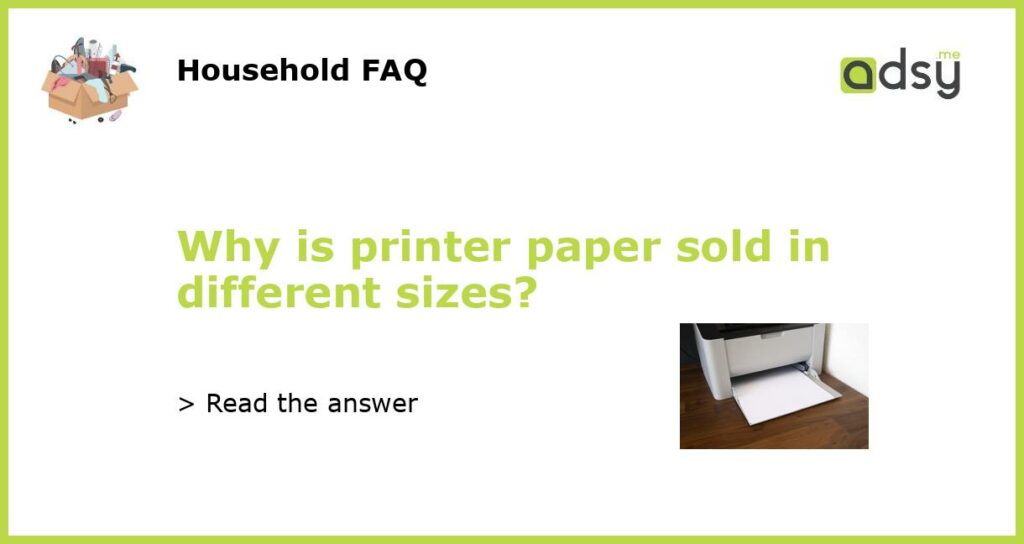The importance of different sizes in printer paper
When it comes to printer paper, we often see different sizes available in the market. But have you ever wondered why this is the case? There are several reasons why printer paper is sold in different sizes, and these reasons play a significant role in ensuring efficient printing and convenience for users.
Standardized paper sizes for compatibility
The most common sizes we encounter in printer paper are the standard letter size (8.5 x 11 inches) and the international standard size known as A4 (210 x 297 millimeters). These sizes have become standardized to ensure compatibility across various printing devices, such as printers, photocopiers, and fax machines.
Standardized paper sizes allow for easy exchange of documents between different devices, regardless of their manufacturer or country of origin. This means that a document printed on A4 paper in Europe can be easily read and reproduced on letter-sized paper in the United States without any loss of content or readability.
Convenience and flexibility in printing
Another reason for the availability of different paper sizes is to provide users with convenience and flexibility in their printing needs. Different tasks may require specific paper sizes, and having options allows users to choose the most suitable size for their intended purpose.
For example, larger paper sizes such as legal (8.5 x 14 inches) or tabloid (11 x 17 inches) are commonly used for printing legal documents, architectural plans, or promotional materials. On the other hand, smaller paper sizes like A5 (148 x 210 millimeters) or half letter (5.5 x 8.5 inches) are often used for printing booklets, brochures, or personal journals.
By providing a range of sizes, printer paper manufacturers cater to the diverse needs of individuals, businesses, and organizations, ensuring that they have suitable options available for any type of printing task.
Efficient use of resources and cost-effectiveness
Selling printer paper in different sizes also promotes efficient use of resources and cost-effectiveness. By choosing the appropriate paper size for a specific printing job, users can minimize waste and reduce unnecessary expenses.
For instance, when printing a simple document that only requires a few pages, using smaller paper sizes can help conserve paper and result in cost savings. On the other hand, when printing large quantities of documents that require a larger working area, using larger paper sizes can help optimize productivity by reducing the need for frequent paper changes.
Furthermore, certain industries or applications may have specific requirements in terms of paper size. Selling printer paper in various sizes ensures that these specific needs can be met efficiently, without requiring users to trim or modify the paper themselves, which can lead to time-consuming and imprecise results.
Meeting cultural and regional preferences
In some cases, the availability of different paper sizes is influenced by cultural or regional preferences. While standard sizes like letter and A4 are widely used around the world, there are variations that are more commonly used in specific countries or regions.
For example, the Japanese B series paper sizes, such as B4 (250 x 353 millimeters) and B5 (176 x 250 millimeters), are commonly used in Japan for printing books, magazines, and other publications. Similarly, newspaper sizes can vary across different countries, with broadsheet, tabloid, and Berliner being common examples.
By offering a range of paper sizes, manufacturers can accommodate these cultural and regional preferences, ensuring that customers have access to the most suitable options for their specific needs.
In conclusion, printer paper is sold in different sizes for a variety of reasons. The standardization of sizes promotes compatibility and ease of use, ensuring that documents can be printed and shared seamlessly across different devices. The availability of various sizes also provides users with convenience, flexibility, and cost-effectiveness, allowing them to choose the most suitable size for their specific printing tasks. Additionally, the availability of different paper sizes meets cultural and regional preferences, ensuring that customers around the world have access to the paper sizes most commonly used in their respective countries or regions. So, the next time you’re shopping for printer paper, remember the importance of different sizes and choose the one that best fits your needs.






